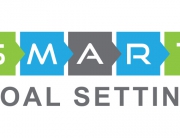There is a growing awareness of the increasing demands and challenges facing veterinary professionals in practice today. Many external (environmental) and internal (personal) factors contribute to perceived stress and anxiety levels experienced daily, leaving the profession a little fragile. Stressors in veterinary practice include long work hours, lack of control over workload, emergencies, unexpected deaths, euthanasia, client grief, compassion fatigue, treatment failure, surgical challenges, difficult clients, interpersonal conflicts, performance expectations and medical errors.
A ‘stress state’ has a marked effect on neural processing ability. The shift in blood flow from the prefrontal cortex (rational brain) to the limbic system (irrational brain) causes reduced problem-solving skills, a sense of urgency, black-and-white thinking, catastrophizing, reduced positivity and poor decision making. (5) Continuously being in sympathetic arousal (flight and fight) can result in stress-related disease and loss of enjoyment in workplace activities, and can impact work/life balance and personal life. What if we had the ability to shift the mind and body from sympathetic arousal back to a parasympathetic (rest and digest) state, and with blood flow more in our prefrontal cortex we could take charge, change our attitudes, beliefs, thinking and how we feel. While neuroscience is still looking for the ‘silver bullet’, the practice of mindfulness has some principles that when applied might help.
Mindfulness practice lowers reactivity to challenging experiences and improves the ability to notice, observe and experience bodily sensations, thoughts and feelings even though they may be unpleasant. It also improves the ability to act with awareness and attention, as opposed to being on “autopilot”. (3) Self-awareness provides the opportunity for self-regulation of a response and the opportunity for self-care. It has adopted and refined techniques such as meditation used for centuries by Buddhists and it is being used in human medicine to help medical professionals to be more resilient and thrive in their work and personal lives. The subject has been recently reviewed and cited in the literature, including the Vetscript March 2015 issue on Veterinary Wellness and a Mindfulness course conducted by Vet Scholar in June 2015.
The proposed theory of mindful medical practice is that enhancing intrapersonal and interpersonal self‐awareness improves well‐being, attention and effectiveness in clinical practice. (2) An experiment at the Western College of Veterinary Medicine tested this theory on veterinary students who discussed the effects of the mindfulness practices in small groups after practicing four methods of intrapersonal self‐awareness (1):
- The body scan: students were guided in systematically noticing bodily sensations and the cognitive and emotional reactions to the sensations without attempting to change the sensations themselves;
- Sitting meditation: students were guided in bringing non-judgemental awareness to the thoughts, feelings and sensations experienced;
- Walking meditation: students practiced slow, deliberate and attentive walking while bringing awareness to the experience; and
- Mindful movement: students were guided in simple hatha yoga exercises to slowly and methodically explore the sensory, emotional and cognitive aspects of the experience.
The results suggested that mindfulness is linked to improvements in attentional functions and cognitive flexibility, which suggested that there might be a greater ability to notice feelings and adjust thinking before responding to any given situation.
The mind is constantly processing countless daily stimuli at the edge of your conscious awareness. You are the meaning maker. If, in the processing, you practice active awareness then you can observe where your thoughts, emotions, feelings and behaviour is at. Mindfulness is about being aware of thoughts and emotions and staying in a place of non-judgement before we act. Being aware means you can decide whether to let go and break free from the thought > emotional reaction > physical reaction cascade. How easy is this to do in the moment? It takes practice to make it permanent. The good news is that it can be learned and the only person responsible for this is you.
A goal of mindfulness practice is to strike a balance between a vigilant and relaxed state of mind, to notice subtle distractions (thoughts, feelings, emotions, bodily sensations) while repeatedly bringing attention back to an object of focus (e.g., breathing). It starts with being present to the moment. Ask yourself what am I feeling and why am I feeling this way? How might I respond to this situation to best serve my needs? When required, there are simple techniques to regulate how you respond. The simplest technique is to focus on your breathing. When you change your breathing from rapid shallow breaths to deep abdominal breathing your heart rate will slow. If required, you can add to this by thinking about your ‘happy place’. Everyone has a favourite place or moment they have experienced when they are in ‘the zone’. Imagine this in detail, what it looks like and how it feels, sounds and even smells when you are there. Go there when needed and you will be more likely to respond to the situation appropriately.
In the often helter-skelter world as a clinician or healthcare person in veterinary practice, you can move from one adrenalin-charged and/or emotional situation to another, whether it is patient or client related. Add to this a workplace environment, operational systems and outcomes that might not necessarily align with your belief systems and it is no wonder you feel exhausted and emotionally drained at the end of day.
Therefore, we need a considerable amount of energy to get through even the easiest day. We are not necessarily selective from where we get it or what it costs in terms of self-care. It is important to create awareness around energy sources and consider your own self-preservation. Think of how often at a work situation you use your sympathetic nervous system and adrenalin to provide the energy to get the job done. Ask yourself – is this sustainable? Here are some things to consider:
- Accept any given situation for what it is – you do not have to like what you have been given in order to accept it.
- Realise that you need plenty of energy and develop an awareness of what sort of energy you are consuming and that it might not be good for you.
- Invest in yourself by reviewing every person, activity, commitment and goal in your life and upgrade the quality of your energy and how it is being consumed.
- Within 90 days, eliminate the three worst energy drains or toxic sources in your life. Do it responsibly and put yourself and your energy first. It may take some courage and support.
- Look for people and activities that add healthy energy to your life.
- Look after yourself better, recharge the batteries and put yourself first
While successful and resilient veterinarians set realistic expectations and cultivate positive psychological coping mechanisms on their own that enable them to succeed in their careers, veterinary medical education itself has tended to ignore training in self‐care skills. (4) Self-care is about looking after yourself first so you are able to then look after others including your patients. With an awareness of self-care, most people can learn to look after themselves better. Have a lunch break, get out of the clinic, go for a walk, have a swim at a local pool, exercise regularly and eat a balanced diet, drink plenty of water, make time to spend with family and friends, minimise alcohol/caffeine consumption and look for the positive in things. Aim to have at least 30 minutes during the work day to clear your mind and not think about work. Book in for a mindfulness course, focus more on your self-care and you will notice the benefits in your work and personal life.
References
- Dobkin, PL and TAD Hutchinson (2013) Teaching mindfulness in medical school: Where are we now and where are we going? Medical Education 47(8): 768-779. doi: 10.111/medu.12200
- Epstein RM. Mindful practice. JAMA 1999; 282:833‐839.
- Kogan LR, McConnell SL, Schoenfeld‐Tacher R. Veterinary students and non‐academic stressors. J Vet Med Educ 2005;32:193‐200
- Strand EB. Enhanced Communication by Developing a Non‐anxious Presence: A Key Attribute for the Successful Veterinarian. J Vet Med Educ 2006;33:65‐70. 19. Lloyd JW, King LJ
- Thompson C. Veterinary Wellness. Vetscript 2015; 22-23
This article was featured in the complementary medicine branch of the NZVA newsletter
Greg Bartlett BVSc BSc Cert SAS Cert IVAS DipVetClinStud MANZVS CEG
Veterinary Coach




Leave A Comment
You must be logged in to post a comment.